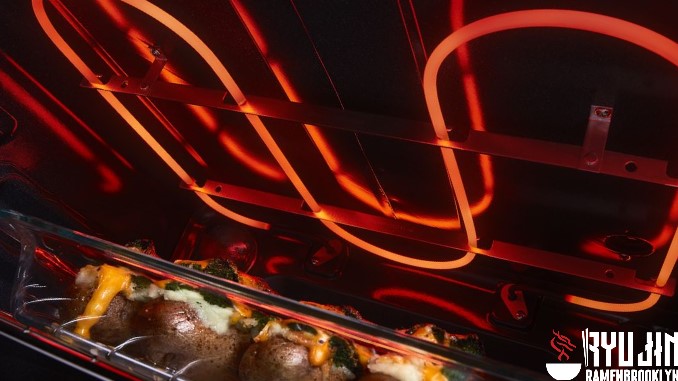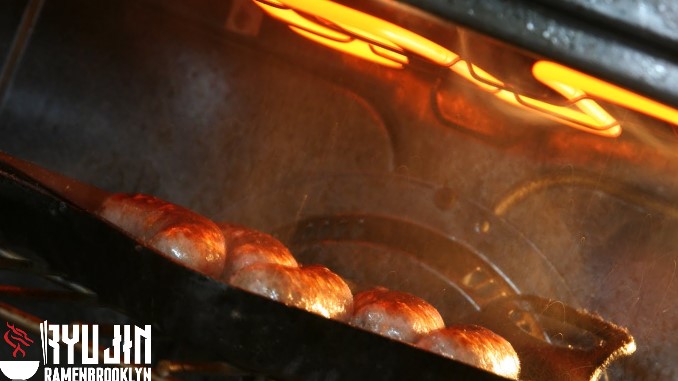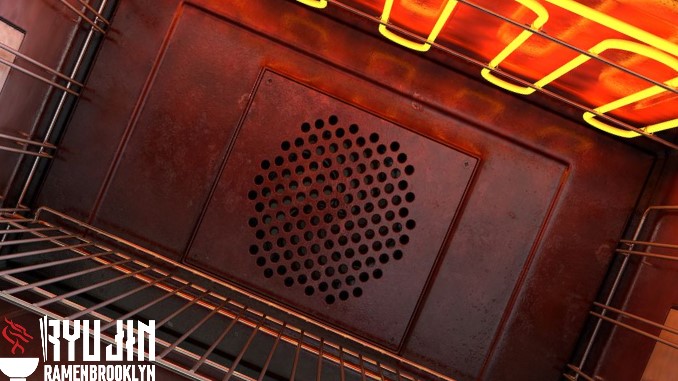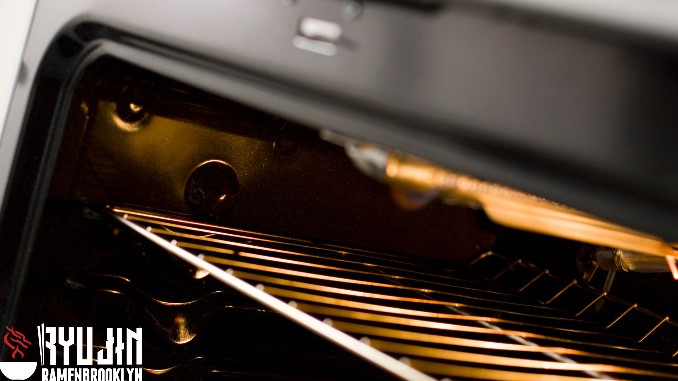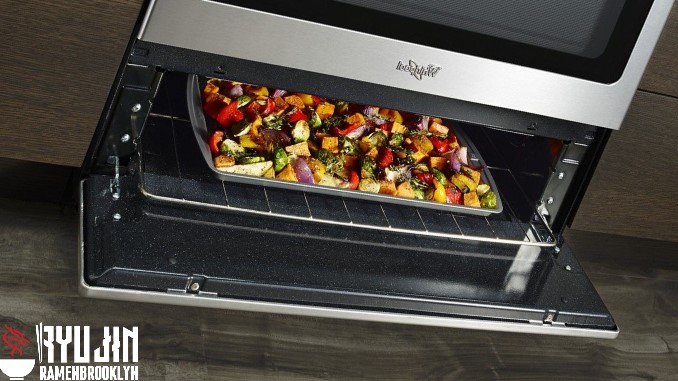What is Broiling in Oven?
When it comes to cooking, there are a variety of methods that can be used. One of the most popular methods is baking, which involves cooking food in an enclosed space. Another popular method is broiling, which uses intense heat to cook food.
Do you know what’s been missing from your life? The perfect steak, cooked to die for with a delicious crust and rich color. But how do you get that succulent flavor without overcooking or undercooking it?! Well, now there is an easy solution: broiling!
Have you ever wondered “what is broiling in oven?” It’s a common question, especially among people new to cooking. Broiling is a cooking method that uses intense heat to cook food quickly. The hot air or radiant heat from the element broils the food, crisping the surface and creating a flavorful, caramelized crust.
In this blog post, we’ll discuss the basics of broiling and give tips on getting the most out of this cooking method. So, what is broiling in oven? Keep reading to find out!
What is Broiling in Oven?
Broiling is a cooking method that uses intense heat to cook food quickly. The hot air or radiant heat from the element broils the food, crisping the surface and creating a flavorful, caramelized crust.
Broiling is a great way to cook thin, lean cuts of meat like butterflied chicken breasts or pork tenderloin medallions. You can also use it as an added bonus when baking other foods that are not typically steamed such as strip steak and kabobs!
Unlike baking and roasting, which employ indirect hot air to thoroughly cook food throughout the whole process of these methods, broiling uses high heat from a direct flame. As such it’s an ideal method for achieving that crispy exterior on vegetables or meats without overcooking their interior texture by accident – especially if you want them tender but not soggy!
Home cooks might have lost themselves in broiling over the years. This is because there’s been so much focus on grilling and its similarities with direct, hot radiant heat from just one side of what you’re cooking that can be obtained by standing around while watching your food not burning — but this doesn’t mean they should stop using their favorite technique! On the contrary, a big difference between grilling (which has generally come up close) versus “broils” foods like meatloaf or Thanksgiving turkeys placed near flame temperatures will truly show itself off best during those cold winter months–especially if done correctly.
The key to broiling success is two-fold: first, ensure your food is well-seasoned before it hits the heat. This will help it caramelize and achieve that crispy exterior we all love. Second, keep a close eye on what you’re cooking. Broiling happens quickly, so it’s easy to overcook or burn your food if you’re not paying attention.
One of the benefits of broiling is that it is a quick and easy way to cook food. It’s also a great way to add flavor to your food. When you broil food, the intense heat sears in the natural juices, resulting in a juicier, more flavorful dish.
Another benefit of broiling is that it is a healthy cooking method. Because it uses less fat and oil than other methods, such as frying, it can help you reduce calories and fat intake. Broiling is also a great way to cook lean cuts of meat, fish, and vegetables.
If you’re new to broiling, you should keep a few things in mind:
- It’s important to preheat your oven before broiling. This will help ensure that the food cooks evenly.
- Place the food on the top rack of the oven so that it is close to the heat source.
- Don’t forget to keep an eye on your food while it’s cooking!
Broiling can go from perfect to burning quickly, so it’s important to stay vigilant.
What Is a Broiler?
A broiler is a device, usually found in the oven, used for broiling. It consists of a heating element and a grill. The heating element produces the heat that cooks the food, while the grill helps to brown and crisp the surface of the food.
Broilers are a source of direct radiant heat in the top of an oven or a bottom broiler drawer. In an electric oven, it’s just one coil attached to your cooktop that you can find under the closest supervision when using this type for cooking food items at high temperatures with close attention paid so as not to burn anything down!
For gas-powered appliances, however, such as those found on homes built before 1985 (or if forgetting about natural convection), there will typically be two Burners – One near MiddleTop where most pots go during standard operation while preheating, then used for slow simmering of sauces or whatnot; the other at what we would traditionally think as “the broiler” towards the top-back of an oven. This is where meat, fish, and some vegetables are cooked with intense heat from above.
Most people use a broiler for cooking meat, poultry, and fish. It’s also a great way to cook vegetables quickly. However, broiling is a quick cooking method, so it’s important to keep an eye on your food to prevent it from overcooking or burning.
Most ovens have a broil setting that allows you to turn on the broiler. The oven will preheat the broiler when using this setting before cooking your food.
If your oven does not have a dedicated broil setting, you can still use the broiler by adjusting the temperature manually. For best results, set the oven to 500 degrees Fahrenheit (260 degrees Celsius).
When using the broiler, it’s important to keep an eye on your food. Broiling happens quickly, so it’s easy to overcook or burn your food if you’re not paying attention.
The best way to ensure that your food doesn’t overcook is to use a meat thermometer. Insert the thermometer into the thickest part of the meat and cook until it reaches the desired temperature.
See more:
How to Broil
Know How to Use Broiler
There’s a lot to consider when deciding whether to broil in your kitchen. First and foremost, ensure that the oven is safe for this type of cooking by checking with either an instruction manual or online before starting any project!
You should also pay attention to what kind of flames are allowed near food- those involving gas ranges must always remain closed while using their respective devices. Electric ones can vary depending on how old they may be but will almost certainly require keeping one door open during setup time, so it doesn’t overheat due independent coil burner.
Broiling is one way to cook food quickly and efficiently, but it’s important that you know how your oven works. For example, if I’m cooking chicken in the gas version of an electric stove (like what many people do), then when broilers come on, they’ll close off any potential airflow, which could lead up causing overheating or even a fire! So always check before starting this process and make sure there aren’t other things going on like kids running around nearby as well since some stoves don’t have child-proof features.
Locate Your Oven Broiler
The broiler is a cooking feature found on some ovens. It’s typically located up high or down low and produces light blue flames when activated; however, it can also situate itself in drawers below the stovetop burners with different positions depending upon where your kitchen may stand aesthetically speaking!
You’ll want to make sure that if you have this type of grill/broil unit installed above an upper rack – as seen in many models- then position these four-inch spaces next closest to the flame by sliding them into open highest slots available while simultaneously turning ones set below, so they’re facing downwards too. This will help evenly heat meat as it’s being cooked from above, ensuring a more consistent final product.
If you can’t find your broiler, check the owner’s manual for your oven. The manual will have instructions on how to use the broiler and where it’s located.
Prepare Food for Broiling
Now that we know how to broil, what can be done with this cooking method? Essentially, anything that would benefit from a sear can be cooked using this intense but short heat. This means things like thinner cuts of steak, chicken breasts, pork chops, and even some vegetables can all come out fantastically when placed under the right conditions!
The key to getting the most from your broiled meat is prep. One of the most important things you need when prepping any type of cut, whether it’s flank steak or filet mignon, will depend largely on how big they are – but there are also other factors like thickness that can impact flavor too! So if possible, try using either butterflied chicken breasts (which work well because their natural shape makes them an even easier manageable piece), roundtable meats such as skirt steaks; thin trimmed strip/bettings, etc.; all good options in general just make sure whatever kind it is, has been properly defrosted beforehand.
Prepping meat is always a good idea, but you must be careful with over-cooking. Small pieces of kabobs or satays are great choices when it comes time to prepare your meal; they’ll keep their original shape while still being cooked thoroughly on the outside! If using thicker cuts such as steak – which takes longer than other types due largely in part because the heat has less access to these heavier foods–then partially cooking them beforehand will help avoid burned crusts caused by overcooking during the final stages under broiler flame treatment once ready serve at desired level doneness.
If prepping fish: You just need to watch how much time is spent on each part because if there isn’t enough, your fish will come out gummy rather than juicy or firm up too much when raw but still delicious.
As for vegetables, pretty much anything goes! Vegetables can also be prepped before being placed under the broiler. One popular method is to cut them into thin slices or strips, so they cook evenly and don’t take as long, but you could also leave them whole if preferred. Broccoli, carrots, zucchini, squash, sweet potatoes, and even green beans are all vegetables that work great when cooked this way!
Be careful of delicate items like leafy greens or squash since these can wilt easily. Also, feel free to use any type of seasoning you want and marinate before cooking for additional flavor; just make sure whatever it is has been patted dry so there’s no excess moisture that could cause steaming instead of browning/searing.
To get that crispiness you want on your partially cooked food, like the oven-baked type of dish or braised meats that have been thrown into an open flame to brown them before putting them in the fridge for later use. Simply turn it over and give both sides a minute under heat, then remove it from the broiler – this will keep everything hot while giving off those great flavors we know so well!
As with any cooking method, there are a few tips and tricks to get the best results possible:
-Thicker cuts of meat will need to be started on lower settings and then increased as time goes on, so they don’t become burnt on the outside while remaining raw in the middle. The same goes for chicken as well! -Pork chops should be turned frequently to prevent them from drying out, especially around the edges.
-Vegetables like broccoli, zucchini, and squash can all be placed on a baking sheet lined with foil for easy cleanup but make sure they’re cut into smaller pieces first, so they cook evenly throughout.
-As stated before, keep a close eye on what’s happening in the oven, as things can go from raw to burning very quickly when using such high temperatures!
Season Food for Broiling
You should always use a rub when seasoning your food for barbecues, roasts, or steaks. Seasoning with oil can lead to smokey flavors and potential fire hazards if there is any spark from an open flame under the broiler!
A dry rub is a mix of spices rubbed into the meat before cooking. This can be anything from a simple blend of salt and pepper to something more complex with multiple herbs and spices. Not only does this help form a flavorful crust on the outside of the food, but it also helps lock in moisture, so the inside stays juicy and delicious.
When using a dry rub, it’s important to massage it into the meat so that it has time to work its way into the pores. This process can be done a few hours ahead of time or even the night before cooking to let the flavors develop. Just make sure the food is placed in a sealed container or plastic bag, so it doesn’t dry out!
If you’re short on time, you can also use a store-bought seasoning mix or simply salt and pepper. Either way, ensure the food is properly seasoned before cooking to have the best flavor possible!
Use the Right Pan for Broiling
Some people like to use a broiler pan when cooking meat because it circulates around the food and gives you that delicious grill marks without turning your steak. For example, if someone was making London Broil or Flank Steak, then by using this technique would not have to worry about flipping their steaks which makes them more tender than other ways of preparing these cuts since most times we want our meats cooked from both sides. Hence, as long there is little fat present on top (which helps with the flavor).
Any oven-safe pan will work fine if you don’t have a broiler pan. Ensure it’s not too deep, or the food will steam instead of sear. A good rule of thumb is to use a pan about the same size as the food you’re cooking so that there’s plenty of room for heat to circulate.
Heating an oven to high temperatures will release toxic chemicals. This is why glass cookware, Teflon, or nonstick are not recommended for use in the broiler of an open flame stovetop such as those found in home kitchens with gas elements; these types can melt under extreme conditions and cause fires if left unattended by someone who knows what they’re doing!
Line the pan with foil for easy cleanup but make sure they’re cut into smaller pieces first, so they cook evenly throughout. If you’re using a marinade, make sure to pat the food dry before cooking so that there’s no excess moisture that could cause steaming instead of browning/searing.
Prepare the Broiler & Place Food on the Rack
Now that your food is seasoned and ready to go, it’s time to turn on the broiler! A standard oven takes between five and ten minutes to heat up, but if you’re in an apartment or condo where there is no second source of power for cooking appliances such as this one, then just make sure that when setting your machine’s temperature (usually found next door) set it at 500° Fahrenheit— leaving open a crack will help prevent over-heating while still allowing plenty enough ventilation within because we all know how important air circulation can be! After turning your oven on, leave the door cracked, so it does not overheat and turn itself off.
Place the rack in the oven, so it’s about 4-6 inches away from the heat source. This will ensure that the food cooks evenly on all sides and doesn’t get burnt.
Carefully place the food on the rack, ensuring it’s not touching any other pieces of food or the sides of the pan. You want plenty of space around each piece so that heat can circulate properly.
If you’re cooking multiple things at once, make sure they’re all roughly the same size, so they cook evenly. For example, if you’re cooking chicken breasts and vegetables, cut the chicken into smaller pieces so they’ll cook at the same rate as the veggies.
Close the oven door and let the food cook for the time specified in your recipe. Keep a close eye on things, as broiling can go from perfect to burned very quickly!
When the food is cooked, remove it from the oven and let it rest for a few minutes before cutting it. This will help lock in all of those delicious juices!
Tips for Oven Broiling
– Heat your broiling pan by putting it in the oven before broiling. This will allow you to sear food evenly and seal in flavors better than if done separately since each side of an item gets heated at different rates when using only one method for cooking with high heat sources such as gas or electric ranges on top third settings.
– To prevent food from sticking to the pan, use oil or nonstick spray. Lubricate your cooking utensil with a little bit of olive juice before adding any other ingredients so that you can easily remove them after being cooked to avoid burning bits left behind on top! Avoid using parchment paper when broiling as it tends to burn at higher temperatures than other methods due to its material makeup.
– To get the most out of your oven, organize foods in a single layer and let them cook evenly. You can also reduce browning by spreading food across an even surface so that every piece is exposed to heat- don’t overcrowd or cover up any pieces with other elements like the pans below!
– Keep a close eye on your food in the oven. The light from this appliance will allow you to easily monitor its progression, but don’t forget about yourself! Never leave any dish unattended during the broiling process, as burns can happen quickly and without warning if care isn’t taken.
– The best way to ensure that your food will be cooked perfectly is by using an oven thermometer. It’s important not only for knowing what temperature I should set my flame broiler. But also, how do you know when it’s time to remove one from the heat after putting them both on top?
– Broiling is a great way to cook food with high heat and quickly. However, it’s best not to use the broiler for longer than 10 minutes, as it can lead to burnt dishes or even fire! For foods that need more time to get cooked thoroughly but still without burning them up (like chicken), I recommend using your regular oven while setting its temperature somewhere between 300-450 degrees Fahrenheit–just make sure you don’t go below 350 because if there were any lower temps, then they would become unsafe for cooking meat all the way through.
– If you want to give your food some extra flavor, try marinating them before cooking. This will help add more depth of taste and can make a big difference in the final product! Just be sure not to use too much acid in your marinade as it’ll start to cook outside the food before the inside gets a chance, leading to an uneven meal.
– Seasonings can also be used before or after cooking. If you’re looking for something simple, salt and pepper usually do the trick, but feel free to experiment with other spices like garlic powder, cumin, paprika, chili flakes, etc.
– Go light on the marinades and heavy with spices. Avoid oil-based sauces, as they can create fire when put near open flames, such as steakhouse grille pans or campfires at your favorite summertime getaway spot! Instead, try fresh herbs like rosemary sprigs which are not only delicious but also pack a lot of flavor without adding calories into what you eat every day – perfect for keeping those pounds coming while still enjoying quality food from time to time.
– When searing meat, it’s important to use tongs, so you don’t pierce the flesh and lose all delicious juices.
– Use only safe materials for cooking. Glass is not recommended because it can easily shatter, even if carefully handled and stored properly; Pyrex has been known to crack when heated up too quickly on the stovetop or oven door – this could cause dangerous fumes inside your house!
– When removing hot pans from the oven, use oven mitts or a towel to protect your hands. Moreover, when it comes out of an open flame area like this one, do consider draping both sides with fabric so they do not continue burning yourself as soon as you take them off the universal chef’s signal for “hot” in most restaurants!
– And as always, have fun with it! Broiling is a great way to create new and exciting dishes, so don’t be afraid to experiment. Of course, not all of them will turn out perfectly, but that’s part of the learning process–you’ll eventually get the hang of it and be able to cook up some masterpieces in no time!
FAQs of Oven Broiling
What Temperature Is Broiling?
The perfect oven temperature for baking a pie is 500 to 550 degrees Fahrenheit. This high heat will ensure that your food doesn’t burn but still gets done in time, so you can serve it right away! If things are cooking too quickly on higher settings, turn down the flame by turning towards low instead; this way, everything comes out delicious without being undercooked or overcooked like certain other dishes might be if left solely up to their own devices (and luck).
What Is the Difference Between Roasting and Broiling?
Roasting is a cooking method that uses indirect, diffused heat. This means the food is not in direct contact with the heat source, unlike broiling. Roasting typically uses lower temperatures than broiling, and the food is placed on a rack to allow hot air to circulate evenly.
On the other hand, broiling uses intense, direct heat to cook food quickly. The food is placed on a wire rack close to the heat source, such as an oven’s broiler element. Both methods can be used to cook meats and vegetables alike, but it is important to keep the differences in mind to choose the right cooking method for your dish!
What Is The Difference Between Broiling and Grilling?
The main difference between these two methods is that broiling uses an overhead heat source while grilling uses a direct heat source. This means that when broiling, the food will cook evenly on both sides without being flipped over. Grilling, however, requires that you flip the food over halfway through cooking to cook both sides evenly.
Another difference is that grilling typically uses higher temperatures than broiling. This is because the direct heat from the grill will cook the food more quickly than the indirect heat from an oven’s broiler element.
Finally, it is important to note that you can only broil indoors, while grilling can be done indoors or outdoors. This means you can enjoy grilled food all year round, even when it’s cold outside!
Do All Ovens Have a Broiler?
Most ovens have a broiler that can be used to cook food from both sides. This is typically located inside or under the top of your range, but some models require you to move up one rack position to work properly – check with the owner’s manual before doing so!
In other cases where this compartment exists below ground level (such as those on built-in accompanied by an output tone voice), all will need electricity via extension lead if there isn’t already enough available at home because these types don’t come with a power cord. If your broiler isn’t working, ensure that the area is properly ventilated and clear of any objects blocking the airflow.
How Long Does It Take to Broil Food?
The time it takes to broil food will vary depending on what you’re cooking. For example, thick cuts of meat will take longer to cook than thin slices of fish. Generally, you should expect food to take about half as long to broil as it would roast at the same temperature.
This means that a steak that would take 20 minutes to roast at 400 degrees Fahrenheit will only take 10 minutes to broil at the same temperature! Keep an eye on your food while it’s cooking so that you can adjust the time accordingly.
Final Thought
Broiling is a great cooking method if you want to cook food quickly and evenly. However, remember the differences between broiling and other methods, such as grilling or roasting, so you can choose the right one for your dish. And don’t forget to check the owner’s manual before using the broiler in your oven!
Now, you know all about “what is broiling in oven?“! Try it out the next time you’re cooking and see how easy and delicious it can be. Also, don’t forget to check out our other articles on cooking tips and techniques. Until next time, happy cooking!
Anthony Michelin (March 26, 1960) is the CEO of Ryujinramenbrooklyn.com – is an expert in finding specialized equipment to assist in the Bar & Kitchen sector. With over 40 years of focus on finding the simplest recipes on the most suitable cookware to create the most delicious meals, I believe it will help you.
